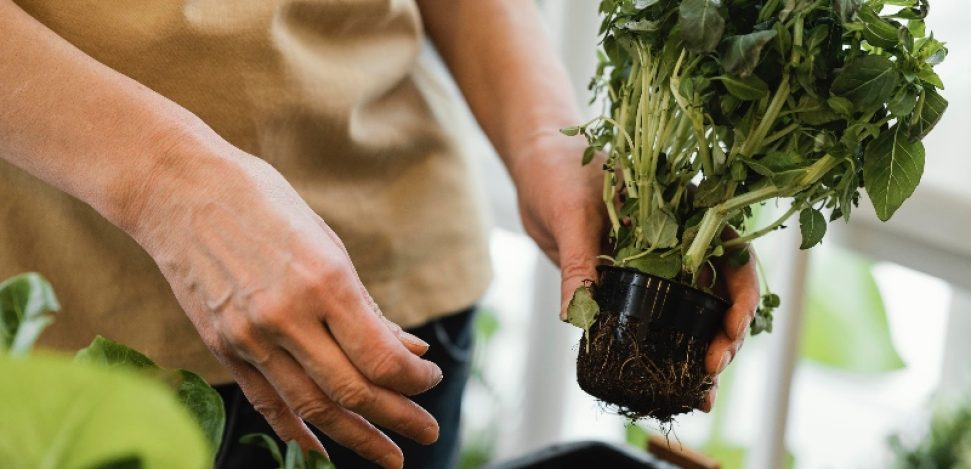To maintain a healthy diet, it’s crucial to include foods that provide the necessary nutrients. Edible plants are fantastic because they offer a multitude of health benefits: providing minerals, vitamins, and, best of all, they can be cooked in a thousand different ways, making it easy to incorporate them into your daily diet.
Edible plants encompass everything from shrubs that can go straight into your salad to aromatic herbs that add a special touch to your dishes. Depending on the plant, they not only add flavor to your meals but can also have incredible medicinal properties.
Some plants can be entirely consumed, from the root to the stem and the fruits they produce, while others don’t bear fruits, and you only utilize the root or leaves. For example, with aloe vera, you keep the leaves to obtain its inner gel.
If you want to venture into gardening, an easy way is to buy plants that have already sprouted and are in a pot. This way, with some basic care, you can start enjoying them.
But planting and caring for your own plants is an entirely positive endeavor. Besides being rewarding, it helps you release stress. It’s also a great way to closely follow the growth of your food and ensure it’s entirely natural.
So, if you’re thinking of cultivating your own edible plants at home, here are some of the best options to start with, their health benefits, what you need, and how to begin cultivation. Go for it!
HOW TO COMPOST AT HOME? EVEN IN AN APARTMENT!
Edible Plants You Can Grow at Home
Various edible plants can be easily cultivated at home, such as oregano, thyme, dandelion, purslane, ginger, and Swiss chard, among others. Some of the simpler ones to grow include:
Spinach
Spinach, with edible leaves, is versatile and can be consumed raw or cooked in various dishes such as soups, stews, and even pancakes. It is a common ingredient in juices and smoothies, providing benefits such as fiber, calcium, iron, potassium, vitamin C, and A. To plant spinach, simply place the seeds directly in the soil, at a depth of 2 cm, with spacing of 10 to 20 cm between each plant.
Rosemary
Although rosemary is known as a popular spice, it also holds value for its medicinal properties, being rich in active principles and antioxidants. You can plant rosemary by placing a 15 cm cutting in a pot, with the lower 5 cm without leaves and burying it in the soil.
Peppermint
Peppermint, with menthol and limonene, can be used as an antiseptic and anti-inflammatory. To plant it, leave a cutting in a glass of water until it develops roots and then transplant it to a large pot without direct exposure to the sun.
Basil
Basil, which provides antioxidants and vitamin C, is planted in moist soil and at a shallow depth. It needs sun to germinate, and it is recommended to use pots with a minimum depth and width of 10 cm to allow proper root growth.
Lettuce
Recommended for diabetics, lettuce regulates blood sugar levels and contains calcium, magnesium, iron, potassium, as well as vitamins A, E, C, B1, B2, and B3. You can successfully grow lettuce from seeds and a seedbed; place the seeds 1 cm deep and transplant the plants directly into the soil once they have sprouted, ensuring they are not directly exposed to the sun and keeping the soil moist.
Radish
With low-calorie content, vitamin C, and minerals such as iodine and potassium, radish is best planted in moist soil and with sun exposure in early spring. Make sure to add a bit of natural fertilizer, such as compost, for optimal growth.
Citronella
Famous for repelling mosquitoes, citronella also has medicinal properties. To plant it, choose an area with nutrient-rich soil and sunlight, place the seeds directly in the soil, and cover it with soil, or transplant a cutting into a sufficiently large pot.
Cilantro
Common in Mexican cuisine, cilantro contains vitamin K, A, and C, as well as minerals like calcium, iron, potassium, and phosphorus. If you want to plant it, get a pot with a diameter of at least 45 cm and a depth of 25 cm, place the seeds at a shallow depth, and make sure it receives enough sun, watering it with a sprayer.
Bell Pepper
Easy to plant, bell peppers offer antioxidants, calcium, magnesium, vitamin C, fiber, and capsaicin. Use sun-dried seeds, place them in a seedbed with access to sunlight and at a shallow depth, and keep the soil moist. Transplant it into the soil when it has germinated enough, making sure to tie the stem to support its growth.
These foods are ideal for anyone, from children to pregnant women, due to their nutritional benefits. Get inspired to grow them and enjoy fresh and healthy food at home!
Tips for Cultivating Plants at Home
Space Planning
Before deciding what to plant, it’s crucial to consider the available space in your home for cultivation. If you live in an apartment or lack a yard, it’s preferable to choose plants that can be placed in pots in the kitchen, dining area, or terrace. On the other hand, if you have a spacious garden, you can allocate a specific area for your crops.
Area Preparation
Once you’ve selected the location for your plants, initiate the necessary adjustments. Ensure you have the required tools, that the space receives the right amount of light or shade according to the plants’ needs, and prepare the soil if you’re planning a larger-scale cultivation.
Family Involvement
Growing your own culinary plants can be an individual hobby, but it can also become a family activity. Divide responsibilities and allow everyone to participate in caring for the crops.
Prior Research
Before deciding what to plant, research the specific requirements of each type of plant. Whether it’s tomatoes, peppers, thyme, or oregano, each plant may need different elements, such as pots, recycled containers, or wooden stakes to support stem growth. Also, consider the quality of the soil and the type of fertilizer needed to create the right environment for your crops.
Seasonal Consideration
Climate and planting season are determining factors when choosing what to plant. Some plants thrive only under specific conditions, while others can be sown year-round but with better growth under favorable weather conditions. Consult the nursery about the planting seasons for the plants you’re interested in and rotate your crops according to the seasons.
Utilizing Kitchen Scraps
Many edible plants can be grown from kitchen scraps such as fruit remnants, cuttings, or leftover seeds, like peppers, avocados, tomatoes, basil, or lettuce. Kitchen leftovers can serve as the starting point for your future crops.
URBAN VEGETABLE GARDENING: HOW TO DO IT?
Advantages of Having a Garden at Home
Chemical-Free Products
Cultivating your own food ensures that your meals are free from pesticides and insecticides, as you have total control over the growth process.
Promotion of Green Areas
Even in limited space, each tree or bush contributes to the increase of green areas. Planting food directly contributes to the preservation of natural spaces.
Environmental Respect
Avoiding the use of aggressive chemicals in your cultivation means not releasing pollutants into the surrounding environment, contributing to environmental conservation.
Education for Children
Involving children in gardening is an effective way to teach them about various aspects of nature, from the germination process of seeds to caring for flora and fauna.
Time Outdoors
Dedicating time to your garden is an effective way to escape daily monotony and enjoy the outdoors.
POTASSIUM SOAP: HOW TO USE THIS NATURAL PESTICIDE
Dietary Improvement
Having culinary plants at home facilitates their incorporation into the daily diet, resulting in a healthier and more natural diet.
Economic Savings
One of the most significant advantages of cultivating edible plants at home is the long-term savings on grocery expenses.
Ready to Begin?





 smokingpaper
smokingpaper



























